What exactly is a 'biodiversity hotspot'?
Defining a hotspot
People often refer to the south west of Australia – or to specific places within the south west – as being a “biodiversity hotspot”, but what does that really mean?
The concept was developed by British ecologist, Norman Myers, who published a paper in 1988 identifying ten tropical forest areas which were characterized by high levels of plant endemism – plants found only within those areas – and high levels of habitat loss. He advocated for conservation efforts to be focussed in such areas because they had the highest likelihood of multiple species extinctions.
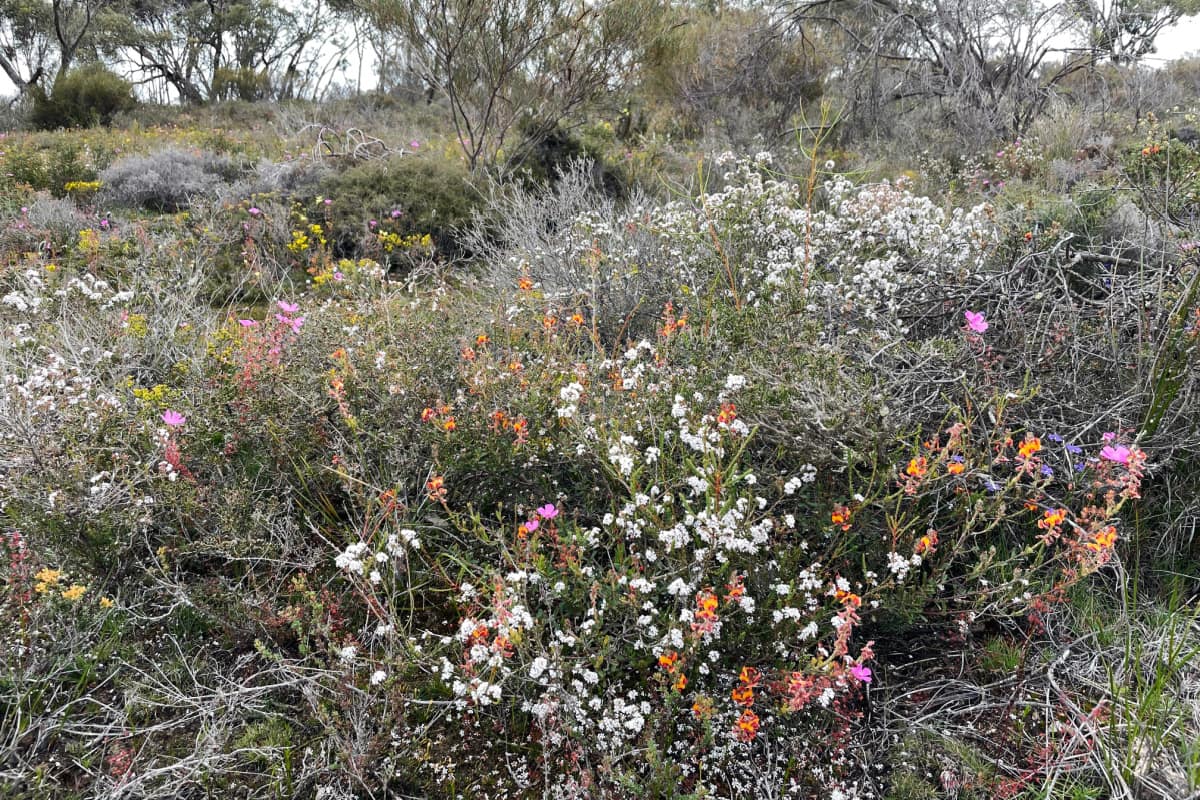
Image: Amanda Keesing
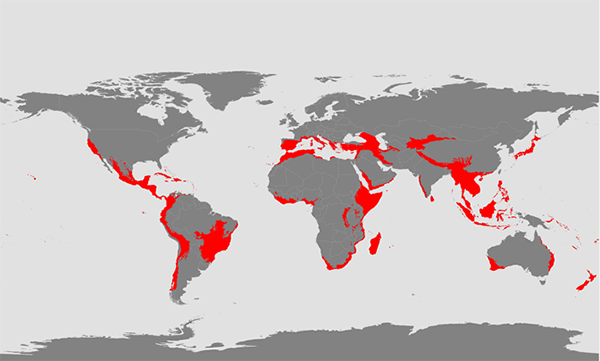
Global biodiversity hotspots
Image: Oxford Research Encyclopaedia of Environmental Science
Global analysis
The global organisation Conservation International adopted the concept and an extensive global analysis was undertaken based on defined thresholds for the two criteria of endemism and habitat loss.
In 2000, Myers and colleagues published a paper that identified 25 global biodiversity hotpots, including south-western Australia, each of which met the two threshold criteria: (1) they had at least 1500 endemic vascular plants (more than 0.5% of the world’s total based on taxonomic knowledge at that time), and (2) they had lost at least 70% of their original native vegetation.
The analysis has been repeated twice since then, with 36 global biodiversity hotspots now having been identified. The only other hotspot within Australia was designated number 35 in 2011. The Forests of East Australia extend from the Batemans Bay area to north of Cairns.
Endemism in fauna too
While global hotspots were identified based on the endemic vascular plant species (and habitat loss), it is worth noting that south-western Australia has significant endemism within its fauna too. There are at least 12 endemic bird species, including the endangered Carnaby’s Black Cockatoos and the Noisy Scrub-bird which was believed to be extinct until a small population was re-discovered in 1961 just east of Albany.
Among the endemic mammals are the honey possum, the quokka and Australia’s rarest marsupial, the critically endangered Gilbert’s potoroo, while other species such as the numbat are “de facto endemics” because they no longer occur across most of their former range so are now confined to the southwest.
The other fauna groups also exhibit high degrees of endemism: about one sixth of reptiles, a massive two thirds of all amphibians and around half of the freshwater fishes.

Honey Possum
Image: Bo Janmaat CC BY-NC 4.0
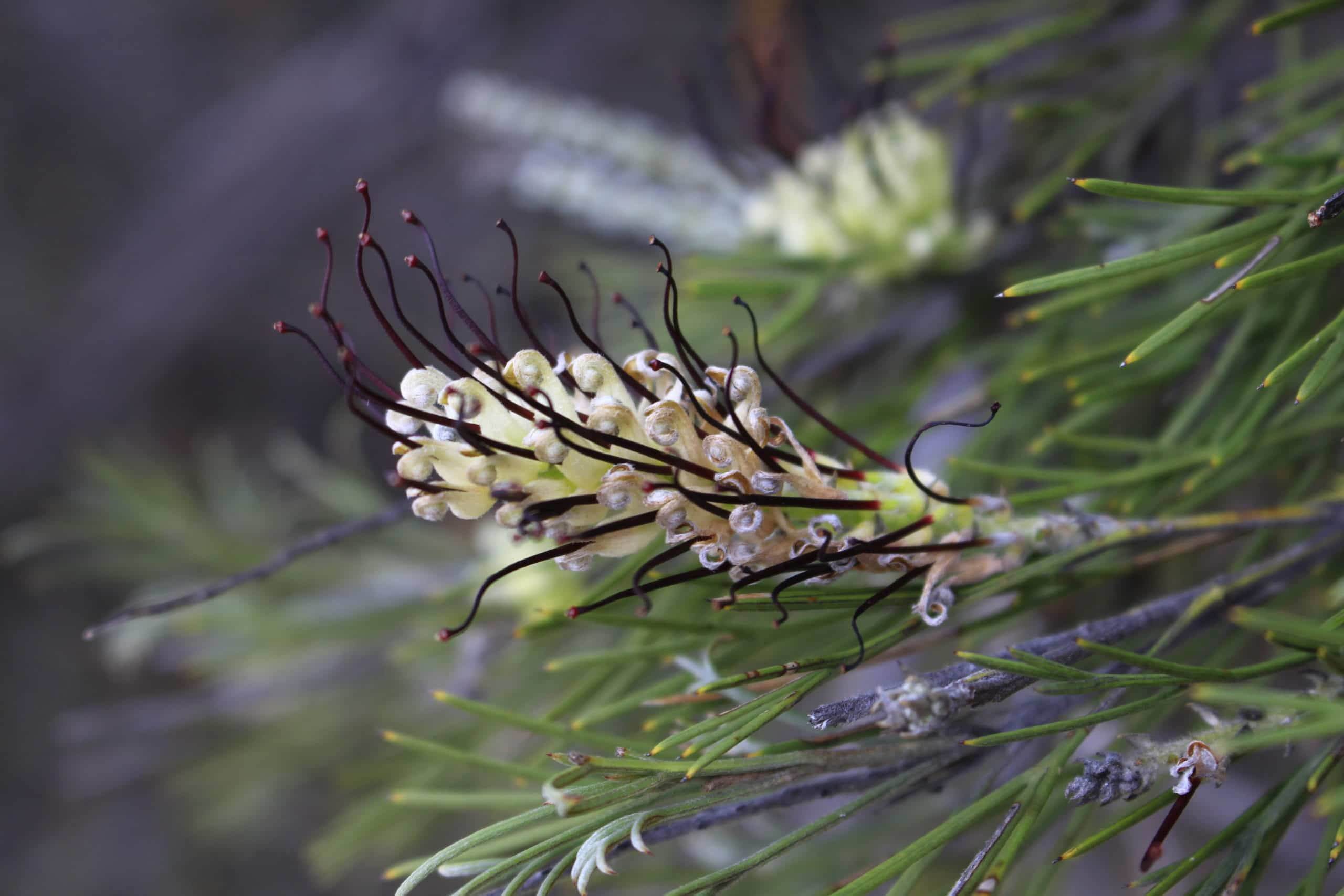
Grevillea hookeriana
Image: Nicole Hodgson
Hotspots within hotspots
It’s one thing to know that the southwest of Australia is a global hotspot – all 356,700 square kilometres of it! But what about concentrations of species diversity or endemic species within the southwest?
Well, that involves making similar analyses of the available species records at appropriate scales. And like many other aspects of systematic conservation, the value of the analysis is highly dependent on the quality of the data, including whether there has been a comparable survey effort across the southwest.
Studies of the Southwest Australian Floristic Region
Two studies of the Southwest Australian Floristic Region vascular flora carried out by one team eleven years apart illustrates this well.
In 2004, Professor Stephen Hopper and Dr Paul Gioia published a paper in which they explored the reasons for the evolution of such a diverse flora within a geologically ancient and nutrient-poor landscape. Included in the paper was their analysis of species diversity and endemic species concentrations based on the 7380 native vascular taxa (species and subspecies) of plants that had been recorded at that time.
Mapping of these taxa showed several areas with concentrations of plant diversity, including in the Walpole, Frankland, Stirling West, Manypeaks and Stirling East areas. Another area of richness was shown in the Bremer Bay to Ravensthorpe area.
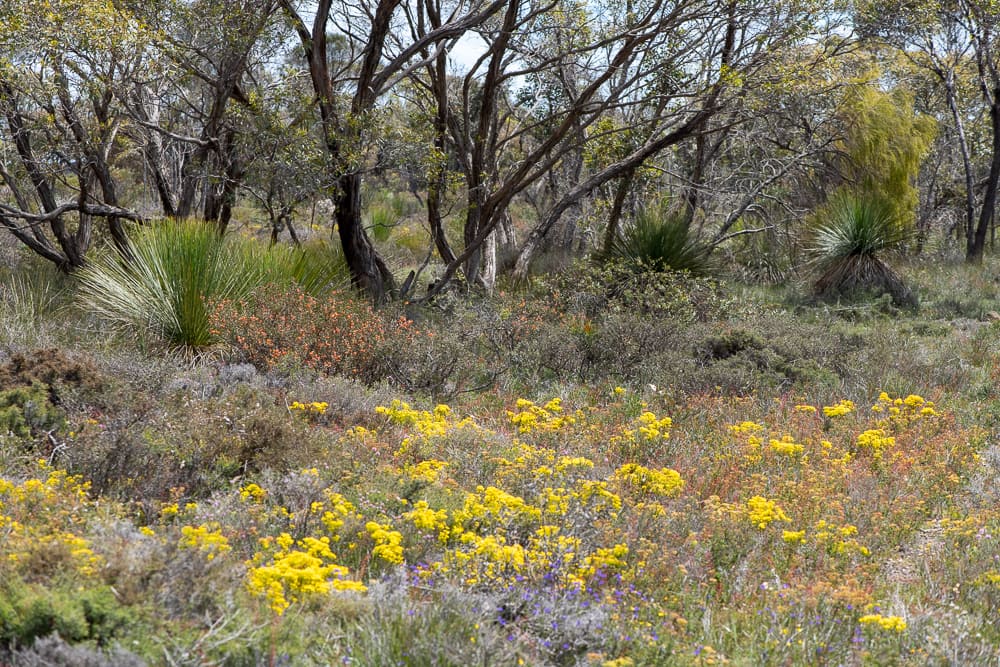
Image: Amanda Keesing
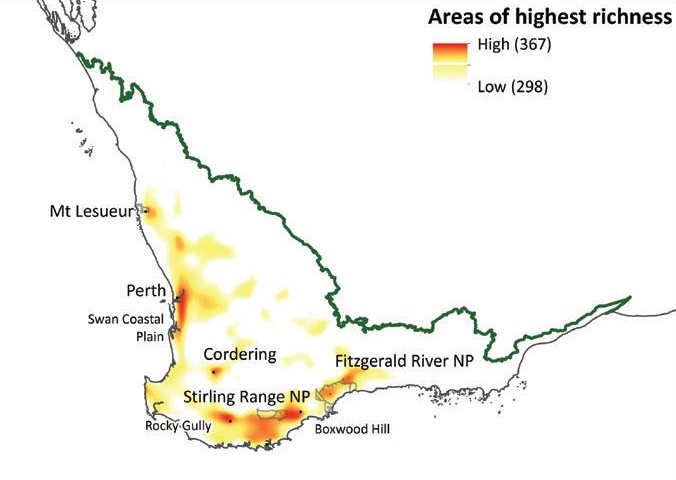
Adapted from Gioia and Hopper (2017) Figure 6.
Emphasizes areas of highest richness (c. top 20% of values), many of which sit outside of the public conservation estate.
Even more species!
By 2017, an extra eleven years of survey effort had increased the number of taxa within the region to 8379, 47% of them endemic to the region and 49% having been described since 1970.
This alone is, globally, an incredible rate of discovery and scientific classification, currently averaging a plant species new to science every week.
While the extra sampling effort showed broadly similar patterns of species richness across the study area, it also identified some additional concentrations including around Rocky Gully and Boxwood Hills.
Further Reading
Myers, N. 1988. Threatened biotas: ‘hot-spots’ in tropical forests. The Environmentalist,8, 187–208.
Myers, N., Mittermeier, R., Mittermeier, C. et al. Biodiversity hotspots for conservation priorities. Nature 403, 853–858 (2000). https://doi.org/10.1038/35002501
Gioia, P. and Hopper, S.D (2017) A new phytogeographic map for the Southwest Australian Floristic Region after an exceptional decade of collection and discovery. Botanical Journal of the Linnean Society, 2017, 184, 1–15.
Hopper SD, Gioia P. 2004. The Southwest Australian Floristic Region: evolution and conservation of a global hot spot of biodiversity. Annual Review of Ecology, Evolution, and Systematics 35: 623–650.
Critical Ecosystem Partnership Fund. https://www.cepf.net/our-work/biodiversity-hotspots/hotspots-defined
